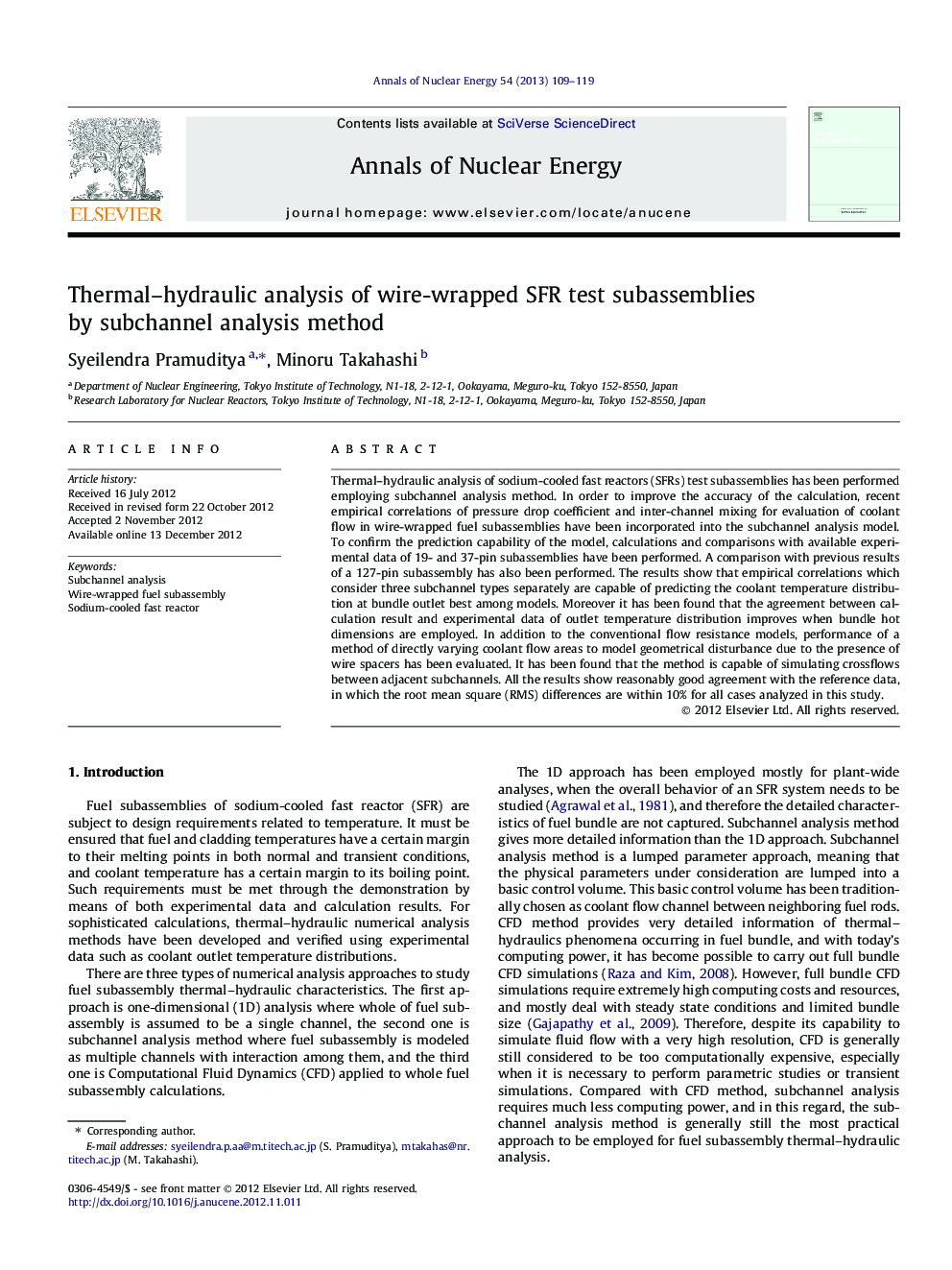| Article ID | Journal | Published Year | Pages | File Type |
|---|---|---|---|---|
| 1728636 | Annals of Nuclear Energy | 2013 | 11 Pages |
Thermal–hydraulic analysis of sodium-cooled fast reactors (SFRs) test subassemblies has been performed employing subchannel analysis method. In order to improve the accuracy of the calculation, recent empirical correlations of pressure drop coefficient and inter-channel mixing for evaluation of coolant flow in wire-wrapped fuel subassemblies have been incorporated into the subchannel analysis model. To confirm the prediction capability of the model, calculations and comparisons with available experimental data of 19- and 37-pin subassemblies have been performed. A comparison with previous results of a 127-pin subassembly has also been performed. The results show that empirical correlations which consider three subchannel types separately are capable of predicting the coolant temperature distribution at bundle outlet best among models. Moreover it has been found that the agreement between calculation result and experimental data of outlet temperature distribution improves when bundle hot dimensions are employed. In addition to the conventional flow resistance models, performance of a method of directly varying coolant flow areas to model geometrical disturbance due to the presence of wire spacers has been evaluated. It has been found that the method is capable of simulating crossflows between adjacent subchannels. All the results show reasonably good agreement with the reference data, in which the root mean square (RMS) differences are within 10% for all cases analyzed in this study.
► We simulate coolant flows in SFR fuel subassemblies by subchannel analysis method. ► Performance of several subchannel analysis empirical models is compared. ► Employment of bundle assumed hot dimensions gives better results. ► Geometry change method is capable of simulating wire-induced crossflows. ► All results agree reasonably well with experimental data.
